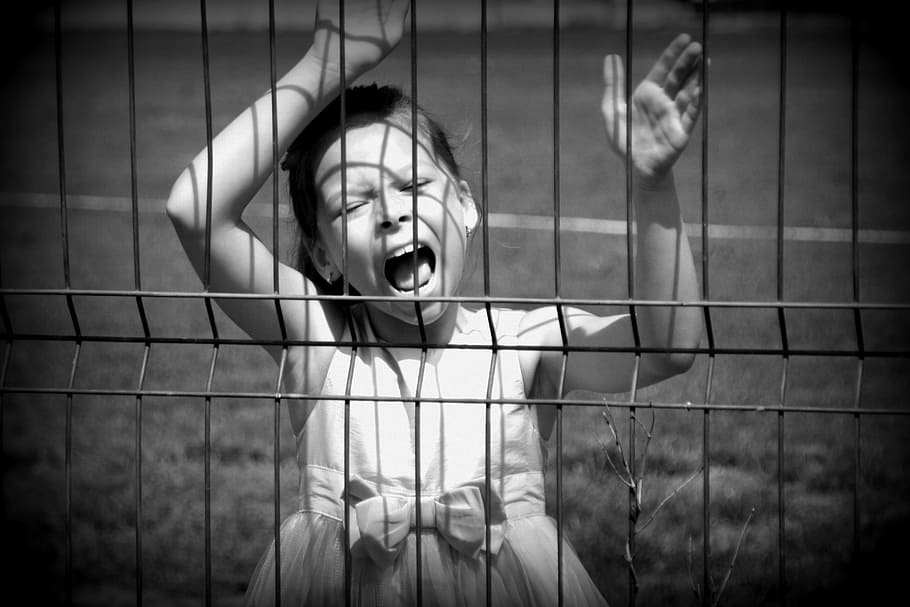Tantrums, crying, aggression… are manifestations that can occur in potentially frustrating situations.

As adults we experience frustration on countless occasions. When we are at work and we have to leave later to finish a task, although we already had plans made when we left work, when that day when we are so tired our child is not willing to go to bed without complaining or when all the plans They go wrong the day we thought everything was going to turn out well.
Children and adolescents also experience this emotional response and the difference is that they usually have more difficulties managing it because they have not developed the resources that we have in adulthood and that makes it difficult to regulation and self-control necessary to address this intense emotion
What is frustration?
Let’s start by defining what this emotional response means, which is universal and is also present in the animal world.
We can define the frustration as the emotional response that arises before him breach of the goals planned. Therefore, we experience it when we have a desire, a need or an impulse that we cannot satisfy and that generates emotions such as anger, sadness and disappointment
If there is no suitable self control or correct management of the frustration the emotions it generates can provoke behaviors such as aggressiveness I cry inconsolably and tantrums which influence various aspects of the child’s or adolescent’s life and can have a negative effect on their self-concept and vision of the world.

How can we promote self-control in children and adolescents?
The key is to develop a correct emotional management that is, providing support so that they are conscious of the emotions they experience, identifying them, accepting them and regulating them.
To develop it in children and teenagers It is necessary to enhance the following points:
- emotional identification
- The expression of emotions
- Show empathy
- Be a good model
- Promote personal resources
Next, we will see in detail what actions within each of the points are beneficial in order to enhance the self-control and emotional management of infants and adolescents.}

emotional identification
We mean helping them identify what is happening to them, naming the emotion they feel.
For this, the moment we detect that the child or adolescent has experienced a frustrating situation:
- We will respect a margin of time for them to calm down When there is a very intense emotion, the rational level does not work and no matter how many things we want to convey to it, it will not be able to assimilate them. Thus, we will leave a reasonable amount of time for you to calm down before helping you understand what happened.
- We will name the emotion “You seem to feel sad/angry/disappointed.”
- We will reflect to you what you are feeling “Because your friend hasn’t wanted to play with you, you now feel very angry and that may make you want to throw the toys.”
The expression of emotions
It is very important that they be able to express how they feel, in this way we reduce the possibility of inappropriate behavior occurring.
To help you express:
- Identify the situation Jointly search for what happened, what was the situation that made you experience the negative emotion, that is, look for the reason for the emotion. It is important to describe it in the most objective way possible, such as “your brother took your favorite toy because he also wanted to play with it and you didn’t like that and it has made you sad now and you don’t feel like playing.” ; instead of “of course you already know your brother, he loves to tease you and that’s why he took the toy.”
- Encourage them to express how they feel It is important that they put words to what they are feeling and it is an opportunity to look for alternative ways to express them correctly such as breathing, painting, speaking…for example, in Sara’s case, her friend had told her that they would go for a walk this afternoon. to the shopping center and at the last minute they told him that they would not go. Sara feels terribly betrayed and thinks that her friend has hurt her a lot. Encouraging her to talk about it also opens the door to being able to look for alternative interpretations or solutions to the situation.
- Return message Above all, in the case of teenagers It is important do not take for granted What do we know how do you feel Therefore, we can use expressions like “if I understood it correctly, you feel…” in this way we reflect to them how they feel and give them the opportunity to open up to their emotional world.
Show empathy
Minimizing the situation with phrases like “it’s not that big of a deal”, “we’ve all been through that” or thinking that it’s nonsense, invalidates what the child or adolescent feels and distances us from the emotional sphere, which is why it is important that the child feel our understanding and help you integrate what you are feeling. For this it is very useful:
- Validate the emotion It’s about making him see and feel that what he feels is okay. This does not mean approving negative behavior, but sending the message that feeling sad, angry, disappointed, is normal and useful. We can give examples of how the adult also experiences these emotions “when mom has to go to the store and there is a long line she also gets nervous, it is normal because she does not want to wait” and add alternatives to how to manage it “then I start making a list with everything I see in the store while I wait and so I calm down and it doesn’t seem so long.
- Allow emotional expression, make it feel meaningful. Encourage them to express themselves, give them space and time and show interest in what they tell us. In some way it is about distancing ourselves from our adult schemes to allow us to experience the situation from their point of view, without exaggerating it, but without downplaying its importance, actively listening to them.
- Keep calm. In situations where frustration appears, it is not always easy to control oneself and the child or adolescent may be nervous, which is why it is important keep calm and speak with a calm tone of voice and a relaxed body posture, acting as model and channeling the negative emotion that the child feels.

Act as a model
In general all people, but especially children learn more through what come than what they hear or are told. Therefore, it is very important to be a good model when managing emotions. If when I get frustrated I lose my temper and scream, it is very likely that my son will act the same way since he has learned it through imitation. So:
- Normalize emotions As we have said before, give examples of how these emotions are also experienced by adults and normalize feeling that way, looking for options to express the emotion.
- Self-regulate. Do not lose calm in the face of the situation, look for personal resources that allow us to be calm and restore an image of tranquility and containment.
- Describe the situation objectively. Do not dramatize or increase the negative effect that the situation has had on the child or adolescent, try to describe it and look for solutions together.
Promote personal resources
Although children and adolescents do not have such an extensive range of tools to regulate themselves emotionally in an effective way, as adults do, it is about enhancing existing resources:
- Create a space for reflection and jointly look for alternatives. This moment can be story time before bed, a few minutes before dinner or during dinner where you can discuss the situations that have happened, being able to brainstorm to find solutions or validating what you have felt. In this way we encourage the child or adolescent to implement the reflection in situations that generate negative emotions, as well as the search for solutions
- Encourage patience. This component is very relevant, since low patience can lead to a low tolerance for frustration. Promoting patience through medium-term deals, establishing piggy banks to save and buy what you want so much or playing board games in turns, enhances patience and reduces the probability of very intense emotions in frustrating situations.
- Offer tools to regulate yourself. Breathing, painting, drawing… are effective resources to help the child or adolescent regulate themselves in tense situations. The next article will be dedicated to offering practical tools to use in these situations.
- Reinforce positive behaviors. It is normal that what draws our attention the most or what we focus on the most is the negative behaviors, the tantrums, when they do not obey the first time… but it is very necessary to capture all those positive behaviors, that although they are not completely, such as that it normally takes the child or adolescent an hour to go to sleep after instruction and that on a certain day it takes 45 minutes, this behavior must be reinforced, in this way we increase the possibilities that it happens again and that it gets better. If a child usually throws a tantrum when he sees a toy in a supermarket and today he has not done so, we must reinforce it and let him know how good the parents feel and how happy they are with him for the containment effort he has made. .
I hope that this article has been able to guide you in terms of guidelines to help children and adolescents promote self-control and emotional management When frustrating situations occur, I will soon publish another article with practical tools to enhance the regulation of negative emotions derived from frustration.








